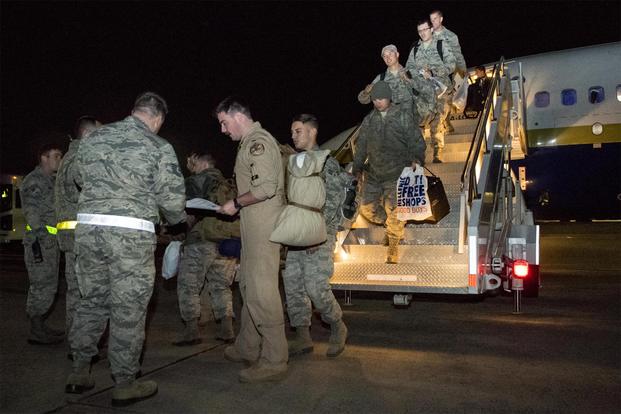ORLANDO -- As the military services begin to execute the Pentagon's new deploy-or-get-out policy, the Air Force is working to take into account its small number of "non-deployable" career fields while being fair to those who do a large share of deployments, the top civilian for the service said.
The Air Force is keeping "fairness and the lethality of the force" in mind, Air Force Secretary Heather Wilson said during a roundtable interview here during the Air Force Association's Air Warfare Symposium.
"The Air Force has had ... a lower percentage of non-deployable people than the other services, historically. We also have some career fields that don't deploy at all," Wilson said on Thursday.
Some military instructors and Air Force musicians are among those who would fall into the non-deployable category by nature of their job.
"I would expect we would try to implement it [the Defense Department policy] with two priorities in mind: one is the lethality and readiness of the force overall to be able to fight. The second is fairness. There is an argument that says if you've got 100 people that can do a job and 10 of them that are non-deployable, the other 90 are carrying the greater burden. If that's true, then we've got to do things that are fair," she said.
Wilson said the service is pulling the numbers now to see what percentage of airmen remain non-deployable.
Related content:
- Deploy or 'Find Something Else to Do' in Civilian Life: Mattis
- With 'Tacking-On' Ritual Banned, Air Force Aims to Create New Traditions
- Mattis Recommends Keeping Transgender Troops in Military: Report
"We need to look at who is really non-deployable," she said. "Then what are their skill sets. Do they even have to deploy; does their career field even have to deploy? So we're defining what the area of concern really is, and then we'll manage and look at that."
Defense Secretary Jim Mattis is looking to separate troops who remain in non-deployable status for more than a year due to a medical issue or other problem. When these troops don't deploy, he said, others have to shoulder a greater burden.
Roughly 286,000 troops are considered "non-deployable" on any given day, though it's unlikely the department would separate that many.
The DoD's new deploy-or-out rules, first reported by Military Times, were recently disclosed by Army Command Sgt. Maj. John Troxell, the senior enlisted adviser to Joint Chiefs Chairman Gen. Joseph Dunford.
Troxell said about 11 percent, or 235,000, of the 2.1 million personnel serving on active duty, in the reserves or National Guard are currently non-deployable.
Of that 235,000, about 99,000 are on the list for administrative reasons, such as not having all their immunizations or required dental exams. About 20,000 are not deployable due to pregnancy, and 116,000 are not deployable due to either short- or long-term injuries or wounds, Troxell said.
On a recent trip in Europe, Mattis addressed the separation policy, and laid down the law behind his strategy.
"You're either deployable, or you need to find something else to do. I'm not going have some people deploying constantly and then other people, who seem to not pay that price, in the U.S. military," he told reporters en route to the U.S. from the Munich security conference.
"If you can't go overseas [and] carry a combat load, then obviously someone else has got to go. I want this spread fairly and expertly across the force," Mattis said.
-- Oriana Pawlyk can be reached at oriana.pawlyk@military.com. Follow her on Twitter at @oriana0214.












